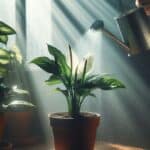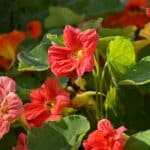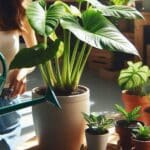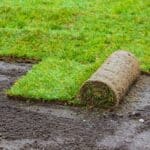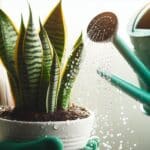Discovering yellow leaves on your beloved dieffenbachia can be disheartening. This lush, tropical plant, known for its striking, patterned foliage, is a popular choice for indoor gardeners seeking to add a touch of the exotic to their spaces.
Yet, when its leaves start to turn yellow, it’s a clear signal that something’s amiss. But don’t worry, you’re not alone in this. Many plant enthusiasts face this challenge, and with the right knowledge, you can turn things around.
Understanding the underlying causes of yellowing leaves is the first step towards reviving your dieffenbachia’s vibrant greenery. Whether it’s due to watering issues, inadequate light, or nutrient deficiencies, identifying the problem is key.
In this article, we’ll explore the common reasons behind yellow leaves and provide you with practical solutions to restore your plant’s health. Let’s embark on this journey together to ensure your dieffenbachia thrives once again.
Understanding Dieffenbachia Yellow Leaves
Causes of Yellowing Leaves
Yellow leaves on your plant can turn your dieffenbachia care routine into a bit of a detective game. First off, too much water is a common culprit. Dieffenbachia prefers its soil moist, but overdoing it leads to root rot, which, you guessed it, causes leaves to turn yellow. Then there’s not enough light.
These plants love bright, indirect sunlight. Too little light and their leaves start waving the white—or should I say, yellow—flag. Don’t forget the nutrient aspect; a lack of essential nutrients, especially nitrogen, can also make leaves lose their green allure.
The Role of Natural Aging
Just like us, plants show their age, but with a bit more grace. Yellowing leaves can be part of the dieffenbachia’s natural aging process. Older leaves lower down on the plant will occasionally go yellow and drop off, making room for new growth.
Think of it as the plant’s way of keeping up with the latest trends by shedding its old wardrobe. It’s a natural cycle, indicating your plant’s maturity rather than a distress signal. However, if young leaves at the top are turning yellow, it’s time to play plant detective again.
Diagnosis and Troubleshooting

When your vibrant dieffenbachia starts waving the white flag through yellow leaves, it’s time for a bit of detective work. Let’s dive into some common culprits and fix them, shall we?
Examining Watering Habits
First things first, let’s talk about water – dieffenbachia’s best friend and, if not careful, its worst enemy. If your plant’s leaves are turning yellow, you may well be loving it a little too much with water. Conversely, too little water could be the issue.
Your dieffenbachia likes its soil moist, but not soggy. Stick your finger about an inch into the soil; if it’s dry, it’s time to water. If it’s soggy, let’s hold off on water for now and give it time to dry out. Consistency is key, so aim for a watering schedule that keeps the soil just right.
Checking Light Exposure
Light’s another biggie. Dieffenbachias thrive in indirect sunlight. Too much direct sun can scorch their leaves, while too little can weaken them, leading to yellow leaves. Find a sweet spot in your home where your plant can bask in bright, indirect light.
If your dieffenbachia is too close to a sunny window, consider moving it a few feet away or using a sheer curtain to filter the light. If it’s in a too-shady corner, a move closer to the light could make all the difference. Remember, it’s about finding the perfect balance.
Assessing Soil and Fertilization
Soil and nutrition play a significant role in the health of your dieffenbachia. Over time, soil can become compacted or nutrient-depleted, and both scenarios can lead to yellow leaves.
Consider repotting with fresh, well-draining soil if yours has seen better days. Additionally, a lack of nutrients can make your dieffenbachia hungry and cause it to signal for help through yellowing leaves.
Feeding it with a balanced, water-soluble fertilizer every month during the growing season could perk it right up. Just don’t go overboard – too much fertilizer can lead to salt buildup and, you guessed it, yellow leaves.
By paying attention to these aspects, you can often reverse the yellowing of leaves and restore your dieffenbachia to its former glory. Remember, plants communicate their needs in subtle ways, and yellow leaves on dieffenbachia are no exception. So, keep a close eye, adjust care as needed, and your leafy friend will thank you for it.
The Importance of the Right Environment
Creating the perfect environment for your dieffenbachia isn’t just about avoiding the bad stuff; it’s about setting up a nurturing haven where this striking plant can thrive. Given the previous summary on troubleshooting yellow leaves, addressing environmental conditions is your next critical step. Let’s dive into defining that happy place for your plant.
Ideal Temperature and Humidity Levels
All types of Dieffenbachia prefer the spectrum’s warmer side, thriving in temperatures between 65°F and 75°F. This range mimics its native tropical conditions, promoting healthy growth and preventing stress that can lead to yellow leaves. If you’re the type to crank up the AC or let the house cool significantly in winter, you may well want to rethink that for the sake of your leafy friend.
Similarly, dieffenbachia loves humidity. Aiming for a humidity level around 60% will make it feel right at home. If your indoor air feels more like a desert than a rainforest, consider using a humidifier or placing your plant on a pebble tray with water to boost moisture levels around it.
The Influence of Airflow and Space
Don’t underestimate the power of good airflow. While dieffenbachia enjoys high humidity, stale air is a big no-no. It needs fresh, circulating air to prevent diseases that often contribute to yellowing leaves.
However, think gentle breezes, not strong drafts. Placing your dieffenbachia near an open window in the summer can be beneficial, as long as it’s not in the path of a gusty wind. Space-wise, these plants don’t appreciate being crammed in.
Crowding can block light and reduce air circulation around the leaves, contributing to their distress. Giving your dieffenbachia some breathing room not only benefits the plant but also adds a touch of nature’s flair to your space without it feeling overcrowded.
Care and Prevention Strategies
Watering Techniques for Healthy Dieffenbachia
For optimal dieffenbachia health, mastering watering techniques is crucial. Your plant prefers the soil to be somewhat dry between waterings. Overdoing it can cause those dreaded yellow leaves or even root rot.
A good rule of thumb is to check the top inch of soil; if it’s dry, it’s time to water. But remember, dieffenbachias like consistency, so try to keep a regular watering schedule.
You may well think they’re as needy as that one friend who always asks for advice but never takes it, but providing them with just the right amount of water will make a world of difference.
Appropriate Fertilization Practices
Dieffenbachia plants don’t ask for much, but they do enjoy a nutritious meal. During their growing season, spring through fall, offering them a balanced, water-soluble fertilizer once a month will do wonders.
However, during the winter, they take a little nap and require less food, so cutting back on fertilization will prevent nutrient overload and potential leaf burn. Think of it as not offering a full four-course meal when a snack will do.
Just like you wouldn’t scarf down a Thanksgiving dinner every day, your dieffenbachia doesn’t need constant feeding when it’s not in active growth mode.
Pruning and Maintenance Tips
Keep your dieffenbachia looking sharp with regular pruning, which encourages dense, bushy growth and removes any unsightly yellow or damaged leaves. Don’t hesitate to cut back leggy stems, as this will motivate your plant to grow more vigorously.
Remember, a clean cut above a node or a leaf will promote the best regrowth. Think of it as giving your plant a haircut to encourage a healthier, fuller appearance.
Plus, trimming away the old makes room for the new, allowing your dieffenbachia to focus its energy on producing vibrant, healthy leaves. Just make sure those shears are clean, as you wouldn’t want to introduce any pests or diseases while you’re at it.
Turn Your Dieffenbachia Green Again
Adjusting Care Routine
Reviving your dieffenbachia’s lush green foliage begins with a few simple adjustments to your care routine.
First, evaluate your watering habits. If the soil feels soggy, let it dry out a bit before giving it another drink. Overenthusiastic watering is a common culprit behind yellow leaves. Aim for moist, not wet, soil.
Secondly, reassess the lighting. Your dieffenbachia thrives in bright, indirect light. If it’s too shadowy or too sunny, the leaves may well protest by turning yellow. Move your plant to a spot where it can bask in the perfect amount of light.
Lastly, give it a nutritional boost. A balanced, water-soluble fertilizer every month during the growth season can work wonders. Just remember to ease off in the winter months.
When to Consult a Professional
Sometimes, despite your best efforts, your dieffenbachia’s leaves may well stay stubbornly yellow. If you’ve tweaked the watering, sorted the lighting, and fed it well but see no improvement, it may well be time to call in the experts.
Persistent yellow leaves can signal deeper issues, like a root disease or a pest invasion, that require professional intervention. Local nurseries or extension services can offer advice specific to your situation.
Don’t wait until your plant is on its last leg. A timely consultation can save your dieffenbachia and restore its vibrant green glory.
Frequently Asked Questions
Why are my dieffenbachia plant’s leaves turning yellow?
Overwatering, insufficient light, and nutrient deficiencies are common reasons for yellow leaves on dieffenbachia plants. Sometimes, it’s natural for older leaves to yellow and drop, but yellowing in younger leaves often signals care issues.
How can I stop the yellowing of leaves on my dieffenbachia plant?
To prevent yellowing leaves, optimize your watering schedule, ensure the plant receives adequate indirect light, and use a balanced fertilizer monthly during the growing season. Also, adjust your care routine as needed to address specific problems.
What is the difference between natural and problematic leaf yellowing?
Natural leaf yellowing occurs as older leaves age and is a normal part of the plant’s lifecycle. Problematic yellowing, especially in younger leaves, typically indicates care-related issues or health problems in the plant.
How often should I fertilize my dieffenbachia plant?
A balanced fertilizer should be applied monthly during the growth season, ensuring the plant receives the necessary nutrients without over-fertilization, which can also cause leaf yellowing.
What should I do if yellow leaves persist on my dieffenbachia?
If yellow leaves continue to appear despite following the proper care routine, it’s advisable to seek professional help. Persistent yellowing could be a sign of root disease or pest issues that require expert intervention.
Image by olgaddemina/depositphotos


